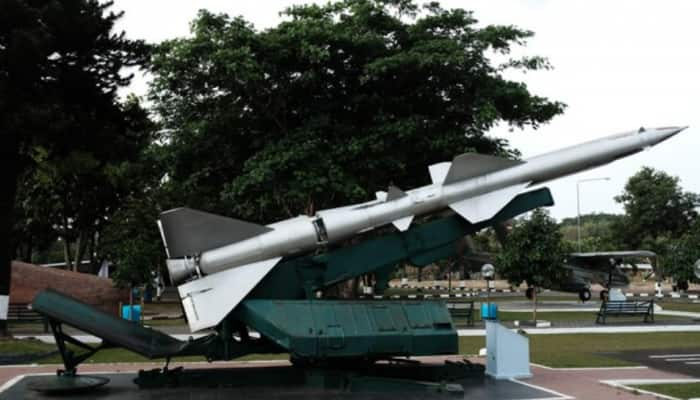NASA to re-attempt launching moon rocket Artemis I on Nov 14
NASA's moon rocket Artemis I had been stowed away for weeks after issues with fuel leaks that thwarted the first two launch attempts and then a hurricane Ian rolled through Florida, forcing the rocket to vacate the launchpad and head for safety.
Trending Photos
) Image credit: Twitter/NASA
Image credit: Twitter/NASA Florida: Following several repairs amid reports of fuel leaks, NASA`s Artemis I mega moon rocket is back on the launchpad on Friday (local time) ahead of the third launch attempt, said officials. The space agency gears up for another attempt to get the Artemis I mission off the ground. The uncrewed test mission is slated for November 14, with a 69-minute launch window that opens at 12:07 a.m. ET. The launch will stream live on NASA`s website, reported CNN. Fuel leaks have kept the rocket grounded since August.
The rocket had been stowed away for weeks after issues with fuel leaks that thwarted the first two launch attempts and then a hurricane Ian rolled through Florida, forcing the rocket to vacate the launchpad and head for safety.
The Space Launch System rocket began the hours-long process of trekking 4 miles (6.4 kilometers) from its indoor shelter to Pad 39B at NASA`s Kennedy Space Center in Florida late Thursday evening. It arrived at its destination nearly 9 hours later, reported CNN.
The Artemis team again is monitoring a storm that could be heading toward Florida, but officials felt confident to move ahead with the rollout, according to Jim Free, associate administrator for NASA`s Exploration Systems Development Mission Directorate.
The unnamed storm could develop near Puerto Rico over the weekend and will slowly move northwest early next week, said meteorologist Mark Burger, the launch weather officer with the US Air Force at Cape Canaveral.
It is NASA`s most significant step to get astronauts back on the moon by 2025. The space agency is nearing the 50th anniversary of its last human moon landing: Apollo 17 in December 1972.
The Artemis I mission is expected to pave the way for other missions to the moon. After takeoff, the Orion capsule, which is designed to carry astronauts and sits atop the rocket during liftoff, will separate as it reaches space.
It`ll fly empty for this mission, apart from a couple of mannequins. The Orion capsule will spend a few days manoeuvring out to the moon before entering its orbit and beginning the trek back home days later, reported CNN.
Overall, the mission is expected to last for 25 days, with the Orion capsule`s splashdown in the Pacific Ocean off San Diego set for December 9.
The purpose of the journey is to gather data and test out the hardware, navigation and other systems to ensure both the SLS rocket and Orion capsule are ready to host astronauts. The Artemis programme aims to land the first woman and first person of colour on the lunar surface this decade.
The Artemis II mission, slated for 2024, is expected to follow a similar flight path around the moon and will have a crew on board. And in 2025, Artemis III is expected to land astronauts on the lunar surface for the first time since NASA`s Apollo programme.
Stay informed on all the latest news, real-time breaking news updates, and follow all the important headlines in india news and world News on Zee News.
Live Tv







)
)
)
)
)
)
)
)
)
)

